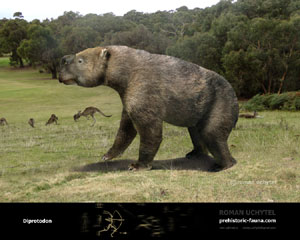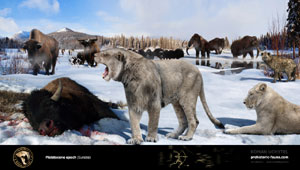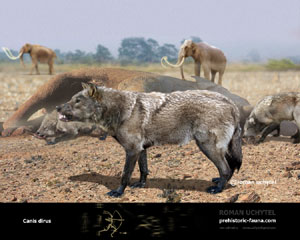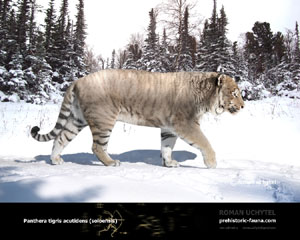|
|
 |  |  |
 |
Всего материалов в каталоге: 313
Показано материалов: 51-60 |
Страницы: « 1 2 ... 4 5 6 7 8 ... 31 32 » |
My Prints |
Просмотров: 1199 |
Author: roman uchytel |
Добавил: rom-diz |
Дата: 01.02.2012
|
|
My Prints |
Просмотров: 1148 |
Author: roman uchytel |
Добавил: rom-diz |
Дата: 01.02.2012
|
|
My Prints |
Просмотров: 1015 |
Author: roman uchytel |
Добавил: rom-diz |
Дата: 01.02.2012
|
|
My Prints |
Просмотров: 1017 |
Author: roman uchytel |
Добавил: rom-diz |
Дата: 01.02.2012
|
|
My Prints |
Просмотров: 1016 |
Author: roman uchytel |
Добавил: rom-diz |
Дата: 01.02.2012
|
|
My Prints |
Просмотров: 1261 |
Author: roman uchytel |
Добавил: matara |
Дата: 01.02.2012
|
|
 Дипротодон — крупнейшее известное сумчатое,
когда-либо обитавшее на земле. Дипротодоны относятся к автралийской
мегафауне — группе необычных видов, живших в Австралии в период
приблизительно от 1,6 миллионов до 40 тысяч лет назад. Их кости, включая полные черепа и скелеты, а также волосы и следы
были найдены во многих местах Австралии. Иногда обнаруживаются скелеты
самок вместе со скелетами детёнышей, когда-то находившихся в сумке.
Дипротодоны населяли редколесья и травянистые равнины; возможно,
держались близко к воде. Питались листьями деревьев, кустарниковыми
растениями, и в некотором количестве — травой. Наиболее крупные
экземпляры были размером приблизительно с носорога: более трёх метров
в длину и около двух в холке. Ближайшие ныне живущие родичи
дипротодонов — вомбаты и коала. Поэтому иногда дипротодонов называют
гигантскими вомбатами. Вероятно, единственную угрозу для этих огромных существ, представляли сумчатые львы ( Thylacoleo carnifex) и мегалании. Нельзя исключать, что последние дипротодоны вымерли уже в
историческое время, а также что появление на материке человека стало
одной из причин их исчезновения. The original image size (300 dpi:) A-4+ (A-3) - 250$ A-5 - 150$ A-6 - 100$
Бестиарий |
Просмотров: 4427 |
Author: roman uchytel |
Добавил: rom-diz |
Дата: 24.01.2012
|
|
 Плейстоцен — эпоха, начавшаяся 2,588 миллиона лет назад и закончившаяся 11,7 тысяч лет назад. Ей предшествует эпоха плиоцена, а последовательницей является эпоха голоцена. Для Евразии плейстоцен был характерен разнообразием животного мира, в который входили слоны(Palaeoloxodon antiquus),мамонты(Mammuthus primigenius), шерстистые носороги(Coelodonta antiquitatis), эласмотерии(Elasmotherium), бизоны и яки, гигантские большерогие олени(Megaloceros giganteus), дикие лошади(Equus stenonis), верблюды, медведи, как существующие ныне, так и вымершие(Ursus spelaeus), гигантские гепарды(Acinonyx pardinensis), пещерные и гигантские гиены(Pachycrocuta brevirostris), львы(Panthera (Leo) spelaea), гомотерии(Homotherium), страусы и многочисленные антилопы. В позднем плейстоцене большая часть существовавшей мегафауны вымерла. Предполагается, что вымирание вызвали новые болезни или первобытные охотники, либо оно произошло в результате изменения климата или комбинации всех факторов. The original image size ( 300 dpi:) A-4+ (A-3) - 450$ A-5 - 250$ A-6 - 150$
Бестиарий |
Просмотров: 4548 |
Author: roman uchytel |
Добавил: rom-diz |
Дата: 18.01.2012
|
|
 Canis dirus or «awful» wolf - one of the largest canine that ever
lived on the Earth and the largest representative of the subfamily of
wolf (Caninae). «Awful» wolves were at their sizes like a large modern
gray wolves (Canis lupus) and weighed, depending on gender and
individual differences, 55 to 80 kg. Morphologically «awful» wolves were
very similar to modern wolves, but these two species are not as closely
related as it may seem at first sight. Homeland gray wolves - Eurasia,
and the «awful» wolf as a type formed in North America. So genetically
«awful» wolf closer to the coyote (natives of America), rather than the
gray wolf. «Awful» wolf has differed from his gray neighbor with his
head, a few larger to the body. The molar teeth of this predator were
more massive than those of modern wolves. In general, the skull of this
species looks like a very large skull of an ordinary wolf. Being
stronger and overweight animals, therefore, less hardy, they can hunt
very large prey, while a frisky gray wolves attacked the swift-footed
prey. Perhaps the «awful» wolves were less social than gray. Among
the subfamilies of wolf (Caninae) truly schooling animal is the gray
wolf. As related to him coyote, «awful» wolf is likely to create a small
family groups, but not as large flocks like modern wolves. Species of Canis dirus finally disappeared with the extinction of the mammoth megafauna about 10 thousand years ago.
The original image size (300 dpi:) A-4+ (A-3) - 300$ A-5 - 150$ A-6 - 100$
Bestiary |
Просмотров: 5076 |
Author: roman uchytel |
Добавил: rom-diz |
Дата: 11.01.2012
|
|
 East Asia was probably the center of origin Pantherinae. The oldest
tiger fossils indicate that about two million years ago tigers were
quite widespread in this region. However, the glacial and interglacial
climatic variations and other geological events caused repeated changes
in the geographic area. According to current information, the common
ancestor of modern tiger is out of time parameters 157-72.000 years ago.
This is much later than expected at the leopard, which is believed to
be originated in Africa 825-470.000 years ago and arrived in Asia
300-170.000 years ago. Ngadon tiger was the largest subspecies of
Panthera tigris. The body weight of this predator reached 400 kg, and
height at the withers - 120 cm. Nobody could argue with such a giant,
except perhaps awful American lion ( Panthera (Leo) atrox),
which was even greater. According to the assumptions of the last of
genetic research, the tigers have almost entirely disappeared at the end
of the Pleistocene era, maybe around 10.000-12.000 years ago. The small
remaining part of population survived, probably in the territory of
modern China. From this region the tigers again began to spread by
migrating along the river following their prey closely - mainly deer and
wild boars. Although the all continental tigers are closely related and
can be considered as regional populations, rather than separate
subspecies, they have developed definite physical and morphological
properties to adapt to environmental conditions.
The original image size (300 dpi:) A-4+ (A-3) - 300$ A-5 - 150$ A-6 - 100$
Bestiary |
Просмотров: 8471 |
Author: roman uchytel |
Добавил: rom-diz |
Дата: 11.01.2012
|
|
|  |
 |  |  |
|
|

